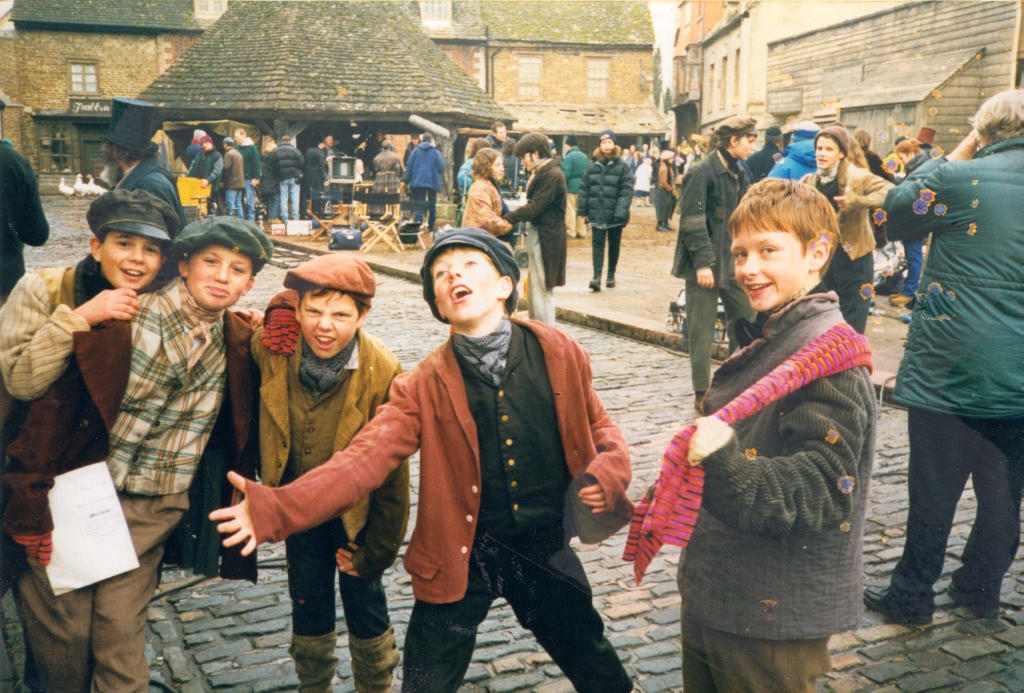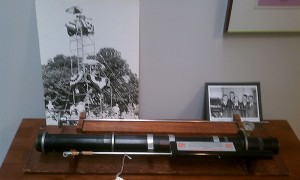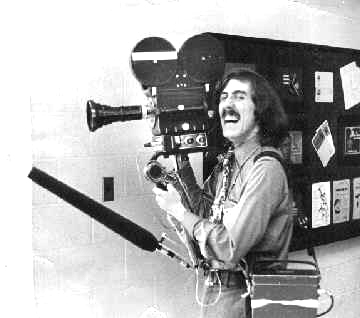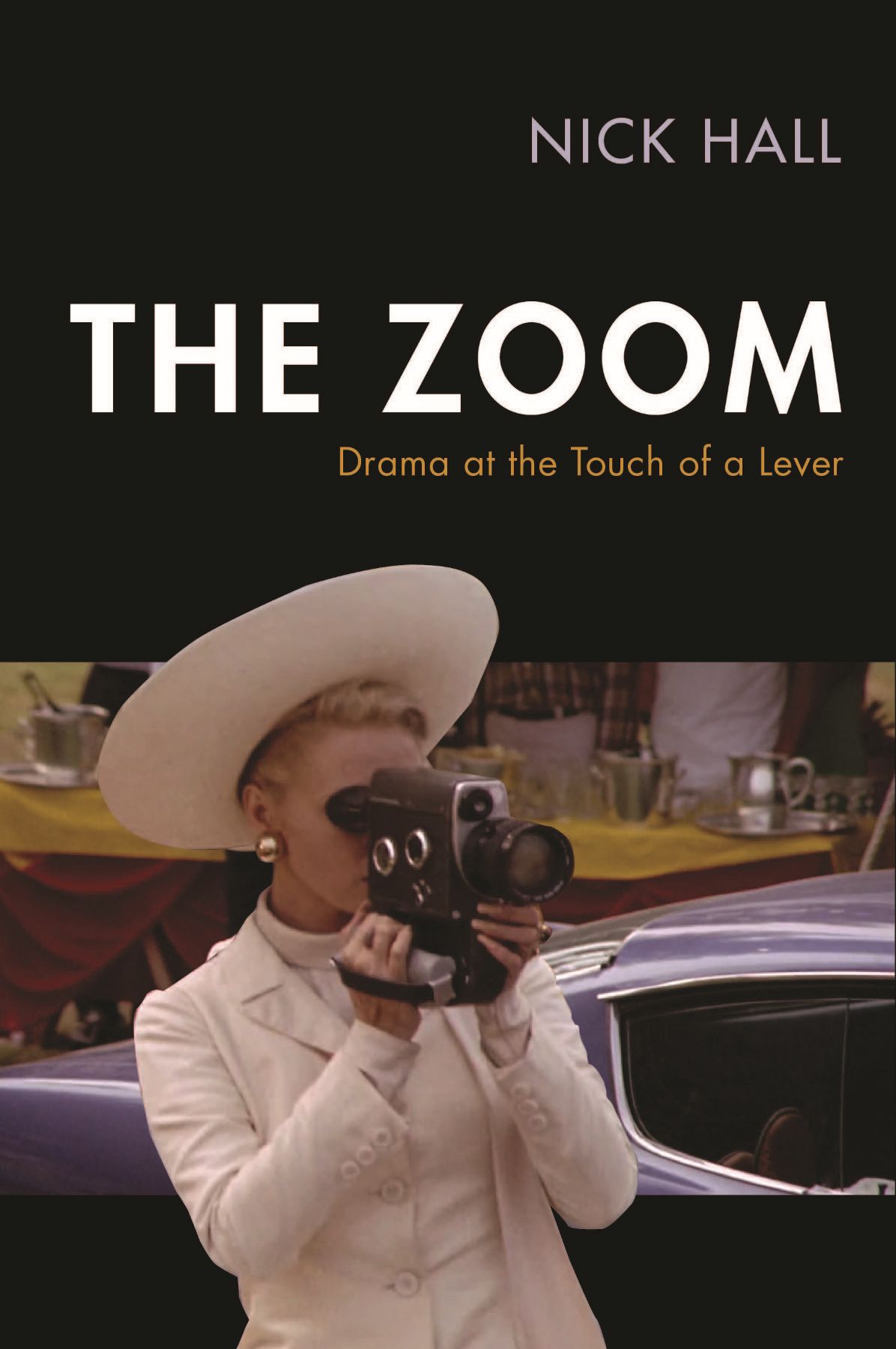Video: the Hidden History of the Zoom Lens
Inspired by the Society for the History of Technology’s Three Minute Dissertation Video Contest, I have made this short film which describes, in the smallest of nutshells, one of the key findings from my doctoral research into the history of the zoom lens.
In which I grumble about being an extra in Great Expectations (BBC, 1999), and reflect upon the uses of television history
(This one has nothing to do with zoom lenses…)
This is a picture of me – far left – and four of my schoolmates. It was taken in November 1998 in Market Place, Oakham, Rutland. In the background – and, indeed, the foreground – are some of the cast and crew of the 1999 BBC adaptation of Great Expectations. I was 13 years old when this photo was taken.
This is the only surviving evidence of my one-day career as a television actor.
WMAR-TV’s Zoomar Lens: Serial No. 1
What a treat to receive – out of the blue – an email from Rob Brockmeyer, production manager at WMAR-TV in Baltimore, Maryland.
Rob sends photos of the fascinating piece of history on display in WMAR’s lobby: a Zoomar lens bearing the serial number “1”.
Read the rest of this post to see a small gallery of images of this history lens. More information about the history of the Zoomar lens can be found in the relevant section of the Who Invented The Zoom Lens? section of this site.
Early history of the zoom lens: filling in the gaps
At his ShadowPlay blog, David Cairns reports that:
In a service to cinephiles/nerds everywhere, guest-Shadowplayer Mark Medin has created a pre-history of pre-code films that used the recently developed zoom lens. The list at bottom doesn’t claim to be complete — neither of us has seen every film from this period — but with your help, we can make it more so. Write in if you’ve seen a zoom in any Hollywood films of the period not listed below. And by all means spread the list around — we’d like to build up as complete a picture as possible of zoom use at the time.
“The most useless gadget in a lazy cinematographer’s toolbox”?
Scott Marks, at the San Diego Reader, doesn’t mince his words when it comes to the zoom lens.
The zoom lens is the most useless gadget in a lazy cinematographer’s toolbox. Why hand crank a lens when you can move a camera? So what it you have to hire grips, lay and level track, rehearse the movement, use more lighting instruments to cover the space, and that a dolly shot costs a lot more money to execute? It looks and feels so much more natural because you’re physically moving through space and constantly changing perspective as compared to simply enlarging an image.
Read the rest of his article, “To Zoom Or Not To Zoom?” at SanDiegoReader.com
Billy Wilder on the zoom lens
I.A.L. Diamond: I think most young directors today, if you offered them the choice between a good script and a zoom lens, would take the zoom lens.
Wilder: Take away the zoom lens. Just don’t let them have it.
– in conversation at the American Film Institute, 1976. In Billy Wilder: Interviews, edited by Robert Horton. University of Mississippi Press, 2001.
Banal considerations
I enjoyed this snippet from Peter Brunette’s (very useful) Roberto Rossellini (Univ. Calif. Press, 1996):
“As Renzo Rossellini insisted quite strongly to me, the zoom and the long take were used in the earlier historical films because they were infinitely faster and therefore infinitely cheaper […] Of course, this does not mean that the zoom does not have any aesthetic effects, only that it use was often dictated by the most banal considerations” (346).
Banal considerations, indeed.
The Zoomar lens and early American television
One of the major thrusts of my doctoral project is to examine the history of the zoom lens in postwar American film and television, in order to give a more nuanced account of why zoom shots became fashionable for a short period during the late 1960s and early 1970s.
Up until now, hardly anything has been written about the significance of zoom lenses in early American television, and how zoom techniques acquired in the 1940s and 1950s might have made their mark on later theatrical filmmaking.
Yet we know that some of the directors and cinematographers who completed their best known works in the 1960s and 1970s – people like John Frankenheimer, Robert Mulligan, Robert Altman, and others – started their careers in television in the 1950s. So it seems like a good idea to find out how the zoom lenses used in early postwar American television were invented and marketed.
I presented a short paper to this effect at an internal postgraduate research conference yesterday (for which Matt Hayler‘s organisational efforts deserve hearty congratulations), sharing some early findings from my research into the development of the Zoomar lens and the ways in which it was used in early American television.
 On the technological side of the story, I discussed how the lens was developed in part as a civilian adaptation of military technologies. For examples of the visual impact of the lens I referred to US network television coverage of the 1952 Republican and Democratic conventions, and to an episode of the popular puppet show Kukla, Fran and Ollie. The image, from the June 1949 issue of American Cinematographer, shows zoom lens innovator Frank Back with Kukla… puppeteer Burr Tilstrom.
On the technological side of the story, I discussed how the lens was developed in part as a civilian adaptation of military technologies. For examples of the visual impact of the lens I referred to US network television coverage of the 1952 Republican and Democratic conventions, and to an episode of the popular puppet show Kukla, Fran and Ollie. The image, from the June 1949 issue of American Cinematographer, shows zoom lens innovator Frank Back with Kukla… puppeteer Burr Tilstrom.
I’m not going to post big chunks of half-finished research on my blog. But I do know that there are a few people each week who come here having searched for information about the zoom lens in Hollywood, and I’m happy to correspond and share knowledge. My email address is nick@zoomlenshistory.org.uk.
I’d also be keen to hear from you if you have professional experience of working in the television or movie industry at any time from the 1940s through the 1970s. Your insights could be invaluable.
Is that a zoom on your camera, or are you just pleased to see me?
Sometime film cameraman and photographer Christopher Ness is pictured here modelling an Auricon 16mm film camera mounted with an Angenieux 12-120mm zoom lens. The photo is featured on his Flickr page. The zoom lens is not, of course, the focus of Ness’s hilarity.
Page 1 of 2 >



